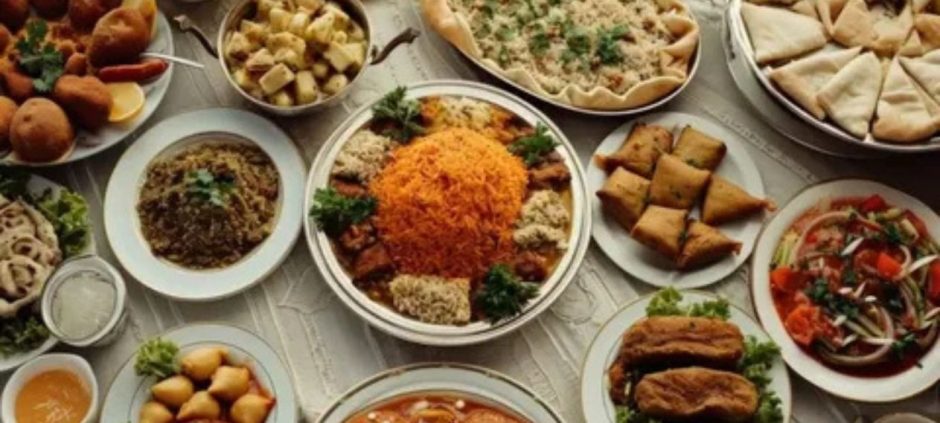Hunza Valley is more than just breathtaking mountains and serene lakes. For anyone who loves food, this hidden gem of Pakistan is a heaven of flavors waiting to be explored. From traditional breads to unique apricot dishes, every bite tells a story of local culture, climate, and history. If you’re planning a trip, your taste buds should be ready for a journey as thrilling as the valleys themselves.
Traditional Hunza Breads and Bakery Treats
Hunza is famous for its unique breads like Giyaling, Chapshuro, and Buckwheat Roti. Giyaling is a slightly sweet, nut-filled bread that locals often enjoy with butter or honey. Chapshuro, on the other hand, is more like a stuffed bread loaded with meat or vegetables. These breads are not only filling but also tell the story of Hunza’s rich culinary history, where every recipe has been passed down through generations.
Buckwheat Roti deserves a special mention because it’s perfect for the cold weather of Hunza. Made from locally grown grains, it’s dense, wholesome, and surprisingly versatile. Spread some apricot butter on it, and you have a perfect breakfast that keeps you energetic for mountain treks.
Apricot Delights
If there’s one ingredient that defines Hunza Valley, it’s the apricot. From apricot soup to jams, oils, and even desserts, this humble fruit is everywhere. Apricot soup is a local favorite; sweet, slightly tangy, and perfect for warming you on a chilly morning.
Hunza apricot oil is another must-try. Not only is it used in cooking, but locals also use it as a natural health supplement. Imagine drizzling golden apricot oil on roasted vegetables or mixing it into bread dough – the flavor is unmatched. For dessert lovers, apricot cakes and tarts made by small local bakeries are simple yet unforgettable.
Rich Meat Dishes and Hearty Stews
Hunza cuisine isn’t only about fruits and bread. Meat dishes here are hearty and flavorful. Chapshuro with meat filling is a classic, but the stews made with lamb or yak are something else. Slow-cooked in traditional clay pots, these stews carry flavors deep into the meat, making every bite melt in your mouth.
Another dish to try is Diram Phal, a lamb and vegetable stew that locals often prepare during festivals. It’s rich, spicy, and leaves a warm, comforting feeling, perfect for winter evenings.
Sometimes, a bite is all it takes to fall in love. Hunza’s food is not just meals, it’s stories, history, and love served on plates.
Fresh Local Vegetables and Mountain Herbs
Hunza Valley’s fertile soil produces some of the freshest vegetables in Pakistan. Carrots, turnips, and green beans are staples, often cooked with herbs like saag or mint leaves for extra flavor. One unique dish is Saag with wild herbs, which carries a slightly earthy taste that’s hard to find anywhere else.
Vegetarian travelers will love the variety of local salads and pickles. Even something as simple as radish pickle or carrot pickle tastes extraordinary here because it’s made from local produce picked at its peak.
Traditional Desserts of Hunza
No food journey in Hunza is complete without desserts. Sweet treats here are naturally flavored and lightly sweetened, reflecting the simple lifestyle of locals. Apricot halwa is a favorite, often served during family gatherings and special occasions.
Another must-try is Hingal, a sweet pastry stuffed with walnuts and apricots. Unlike commercial sweets, these are handmade and packed with local flavors, making them a perfect souvenir to take back from your Hunza trip.
Hunza food isn’t just about taste. It’s about health, culture, and mountain living. Every meal has a story. And speaking of stories, the first snowfall in Gilgit-Baltistan transforms not only the scenery but also the culinary mood. Warm apricot soups and hearty stews feel even more comforting during that magical season.
Local Drinks That Refresh and Rejuvenate
Hunza isn’t only about solid meals; drinks here deserve attention too. Apricot juice, herbal teas, and walnut milk are popular. Herbal teas made with local herbs help combat the cold mountain air and are surprisingly refreshing. Walnut milk is another unique drink; slightly nutty, naturally sweet, and energizing – perfect for long treks.
Snacks and Street Food in Hunza Valley
If you wander through Karimabad or Aliabad, street food is waiting. Roasted corn, local nuts, and simple fried snacks like Pakora with mountain herbs are common. Locals enjoy these while chatting or resting by riversides, making them not just food but a social experience.
Hunza street snacks are perfect for food lovers who want a quick bite while exploring the breathtaking valleys.
Why Hunza Food Is Worth Traveling For
Hunza’s cuisine is a perfect combination of taste, health, and culture. Locally sourced ingredients, natural sweeteners, and traditional cooking methods make it distinct. Every meal here feels personal, as if the mountains themselves are serving you a warm plate.
From apricot jams to hearty lamb stews, the Hunza Valley proves that food is not just sustenance, it’s an experience. So, next time you plan a trip to northern Pakistan, let your stomach lead the way and explore these unforgettable flavors.
Hunza isn’t just a feast for the eyes; it’s a feast for your taste buds, too. Start planning your food journey, pack an empty stomach, and let every meal tell you a story you’ll never forget.










